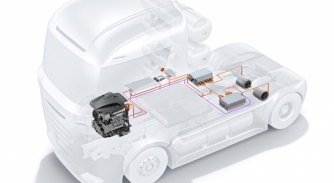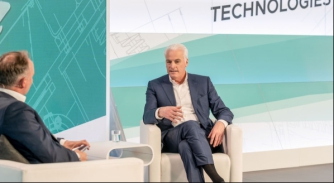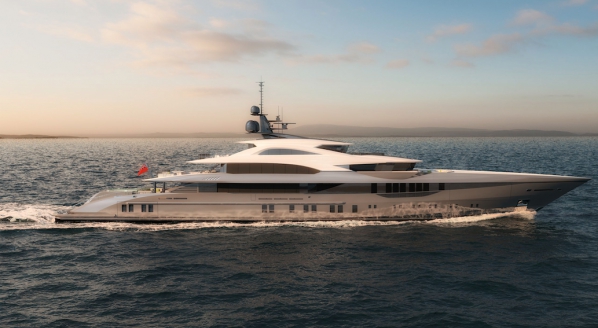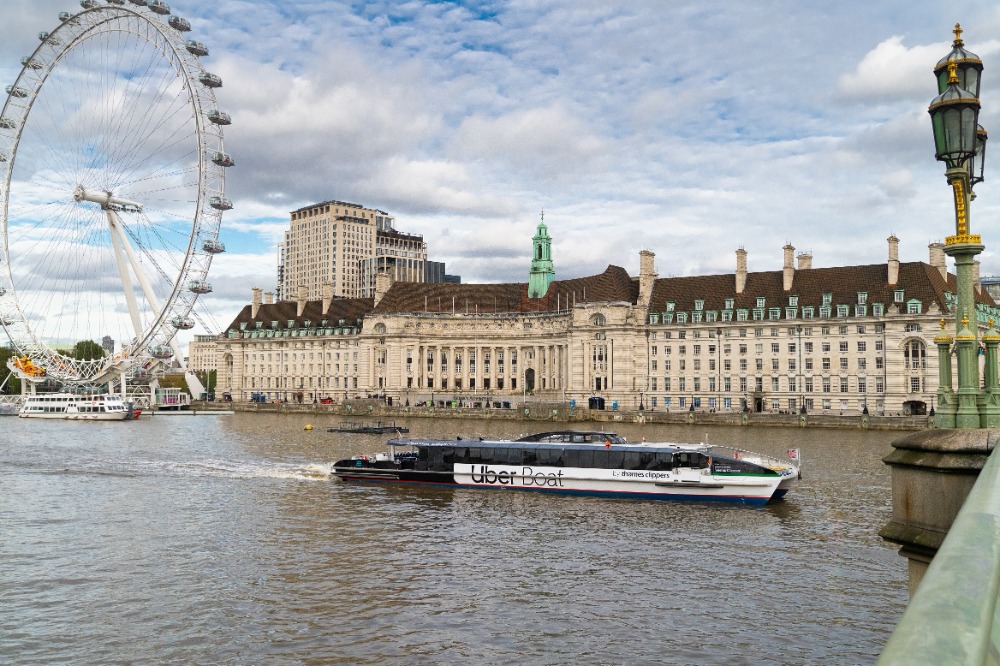Hydrogen powered propulsion is coming to the Thames
How decarbonising a London icon may outline a template for the superyacht sector to hit its targets…
SuperyachtNews Speaks exclusively with Ivo Veldhuis, technical manager of Mayfair Marine, as the project picks up speed after securing funding from the UK Clean Maritime Demonstration Competition, and as Veldhuis explains:
'It's not about designing a boat, it's about designing a complete transport system'
The Uber Boat by Thames Clippers fleet is an iconic part of the London cityscape. Its high-speed catamarans slice between stops and under bridges year-round. But there is a change imminent. The Clean Maritime Act states that as of 2025: 'All new vessels being ordered for use in UK waters are being designed with zero-emission propulsion capability.' As the industry strives for a sustainable future, this project and its protagonists link to the superyacht industry and may provide a template for the marine sector to reach its decarbonisation targets.
With a current fleet of 21 running on various conventional diesel propulsion systems and capable of speeds up to 30 Knots, the fuel consumption of the Uber Boat by Thames Clippers vessels is in the millions of litres per year; the next generation of the Thames fleet will need a radical change. And, it is hoped, hydrogen will provide an emissions-free platform for the next generation of Uber Boat by Thames Clippers to handle an expected doubling of passenger numbers by 2030, increasing from four to eight million per year in this time.
The first step in this change is a feasibility study. Mayfair Marine, working with DNV for regulatory support and One2three naval architects, will present 12 parametric concepts in 2022 that will balance the benefits and drawbacks of various configurations of three forms of hydrogen storage; Cryogenic, Pressurised and Methanol. Each has its own specific set of design considerations and, crucially, differing infrastructure networks to support its use, a hurdle that is often seen as restricting the broad application of hydrogen fuel cells in the superyacht industry.
As Veldhuis explains, it's not as simple as just buying a suitable vessel. "My feeling is, when presenting a proposal for something like this, you have to convey why you want to be a zero-emission company and what it means to you. It's easy to say, 'Ok, we are going to buy a zero-emission vessel'. But if you approach a shipyard like this, sure, they will build one for you, but it will be the vessel that they think you need, that is not good enough to make a zero-emission system like this work."
The complexities of the Thames showcases the layered issues that the project will have to consider. With draft restrictions come weight considerations, and as in any hydrogen fuel cell system, there will still be significant battery banks to act as a capacitor for acceleration and sudden changes in load. And, as many naval architects are grappling with in their quest for zero-emission yachts, these batteries are very heavy. Support from a forward-thinking classification society will be necessary, as Veldhuis anticipates, "DNV being obviously one of the foremost when it comes to hydrogen and fuel cells which helps because we want to push the technical envelope on this project."
Then there is the issue of hydrogen supply and transfer. As yet ill-defined by regulators, the guidance will need to keep pace. Veldhuis and his team see the best way to get results is with a combined approach. As we speak, it becomes clear that Veldhuis does not see this as simply a case of designing a high-speed passenger transport vessel. "The way we have treated this is from a complete transport system perspective, of which the boat is just one part. The fuel infrastructure, awareness of where the hydrogen is coming from, the passenger journey, all of these factors together make up the complete transport system." As Veldhuis clarifies, a system only works when complete. If a certain storage system for hydrogen is identified as being preferred through the feasibility study, then the network to support it can be built around that. Waiting for the hydrogen supply and then building a vessel to match is reactionary.
%5B2%5D.jpg) Current generation Uber Boat by Thames Clipper leaving St Pauls, London
Current generation Uber Boat by Thames Clipper leaving St Pauls, London
The first iteration of a zero-emission Uber Boat by Thames Clipper, once on the water, will feedback into the system a detailed stream of position and performance data that will guide the design modifications on the next, to optimise the system and increase the efficiency. Not only because of the environmental considerations but because, as Veldhuis reminds me, it is a business and must operate as such. Hydrogen remains at least as expensive, if not slightly more than diesel, and the consumer's enthusiasm for green transport will be tested if the price increases drastically.
The broader implications for the superyacht industry are manifold. While some early adopters of hydrogen technologies have been promising, it is hard to imagine it as a systematic approach. This project is developing as a case study for the superyacht industry's adoption of alternative fuels. As Veldhuis highlights, this has to be tackled as a collective issue. "The redesigning of the system is ambitious, and this is where the superyacht industry can take reference. The superyacht industry needs more system thinking. People are saying, 'If the marinas don't sell hydrogen, why I should build one?' Well, why don't owners group together to build the hydrogen infrastructure and then build their yachts?"
The operational profile of these high-speed vessels is vastly different to the typical superyacht; the water jet is not the most efficient propulsion system for most superyachts, for example. However, the concept of developing and presenting a systemwide approach, re-evaluating the fundamentals of design in the name of efficiency, and front footing the hydrogen supply network may be a pivotal step to accelerate the transition to an emissions-free future for the superyacht industry.
Photo credit: Uber Boat by Thames Clipper
Profile links
Click here to become part of The Superyacht Group community, and join us in our mission to make this industry accessible to all, and prosperous for the long-term. We are offering access to the superyacht industry’s most comprehensive and longstanding archive of business-critical information, as well as a comprehensive, real-time superyacht fleet database, for just £10 per month, because we are One Industry with One Mission. Sign up here.
Related news

Regulation and insurance in a decarbonised future
IUMI calls for mandatory requirements to facilitate the use of green fuels
Business

Bosch plans fuel cell push – will the superyacht industry take note?
Following Bosch's plans to invest €1bn in the technology, Justin Olesinski discusses the significance for yachting
Technology

Lürssen to install first hydrogen fuel cell on a superyacht
The new technology should make it possible to anchor emission-free for 15 days or cruise 1000 nautical miles at a slow speed
Technology

Efficiency and flexibility is key
An increase in global energy demand signals urgent need for eco-friendly power generation
Technology
Related news
Efficiency and flexibility is key
4 years ago




